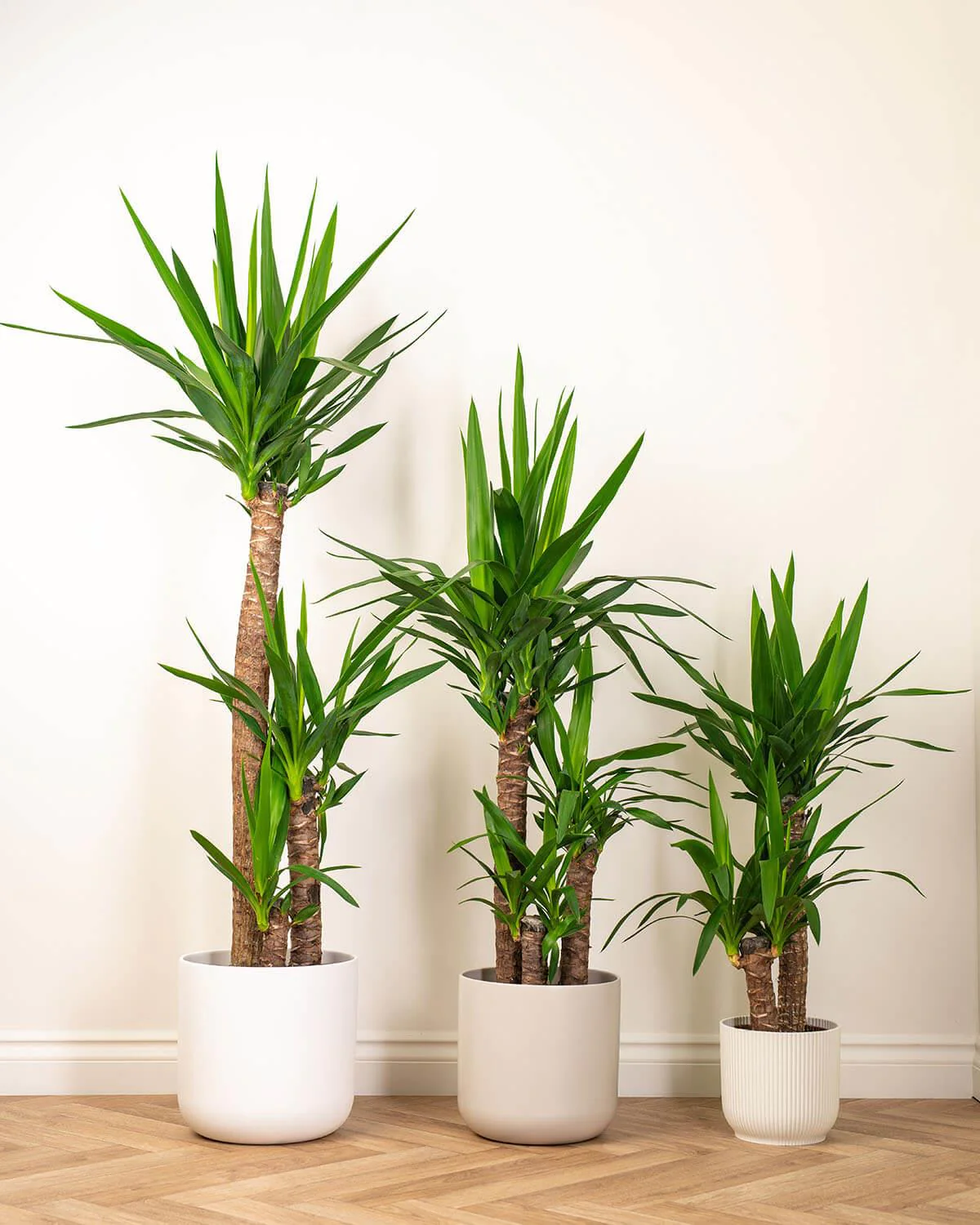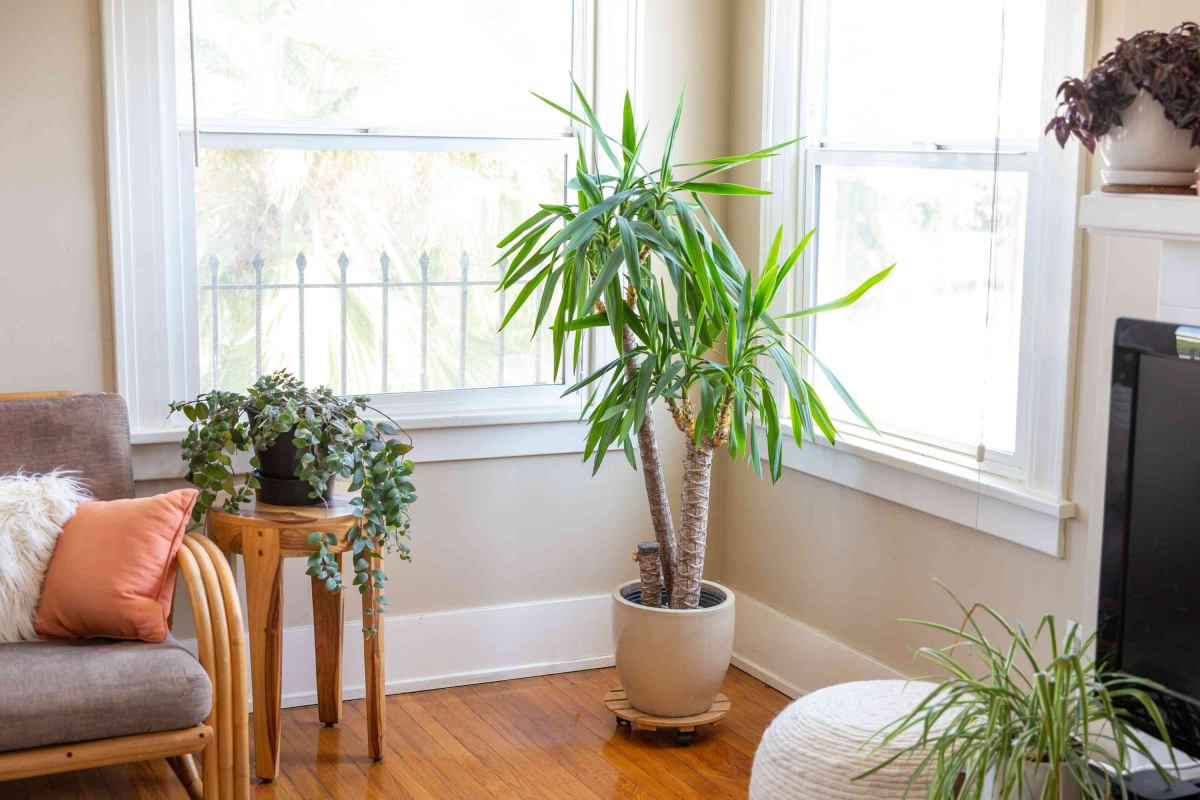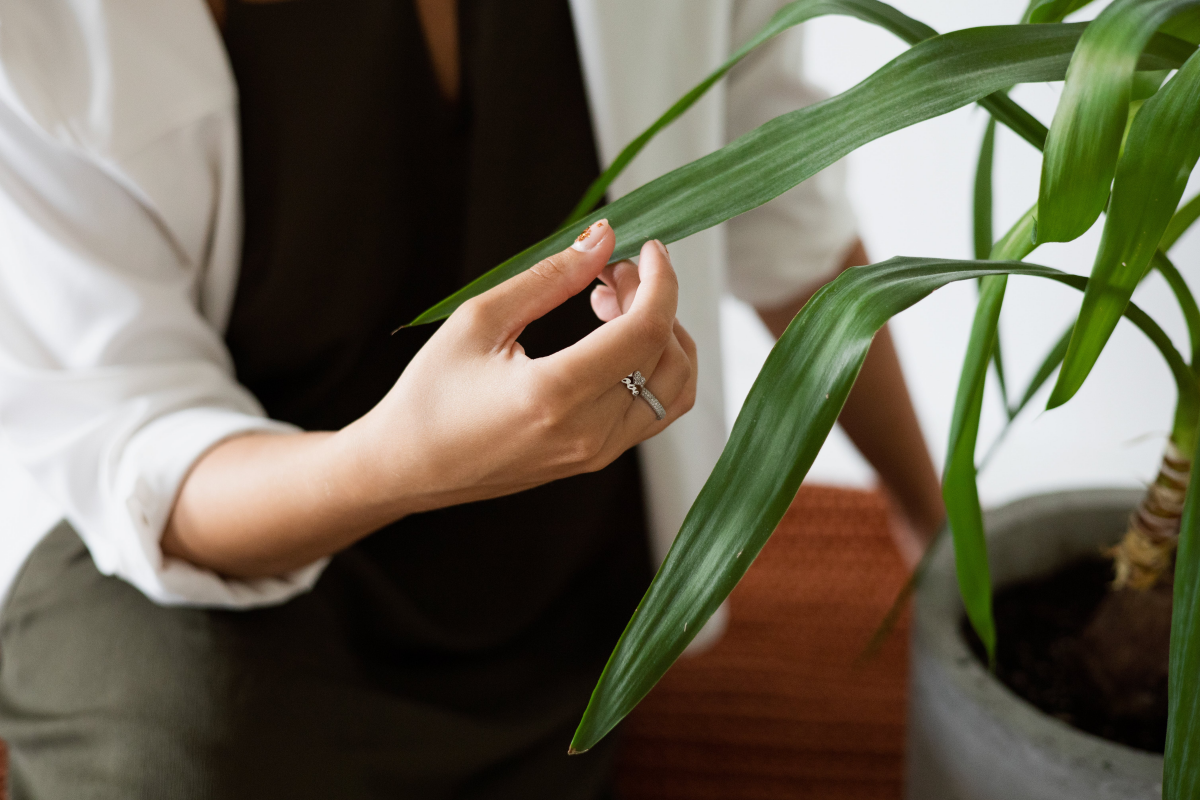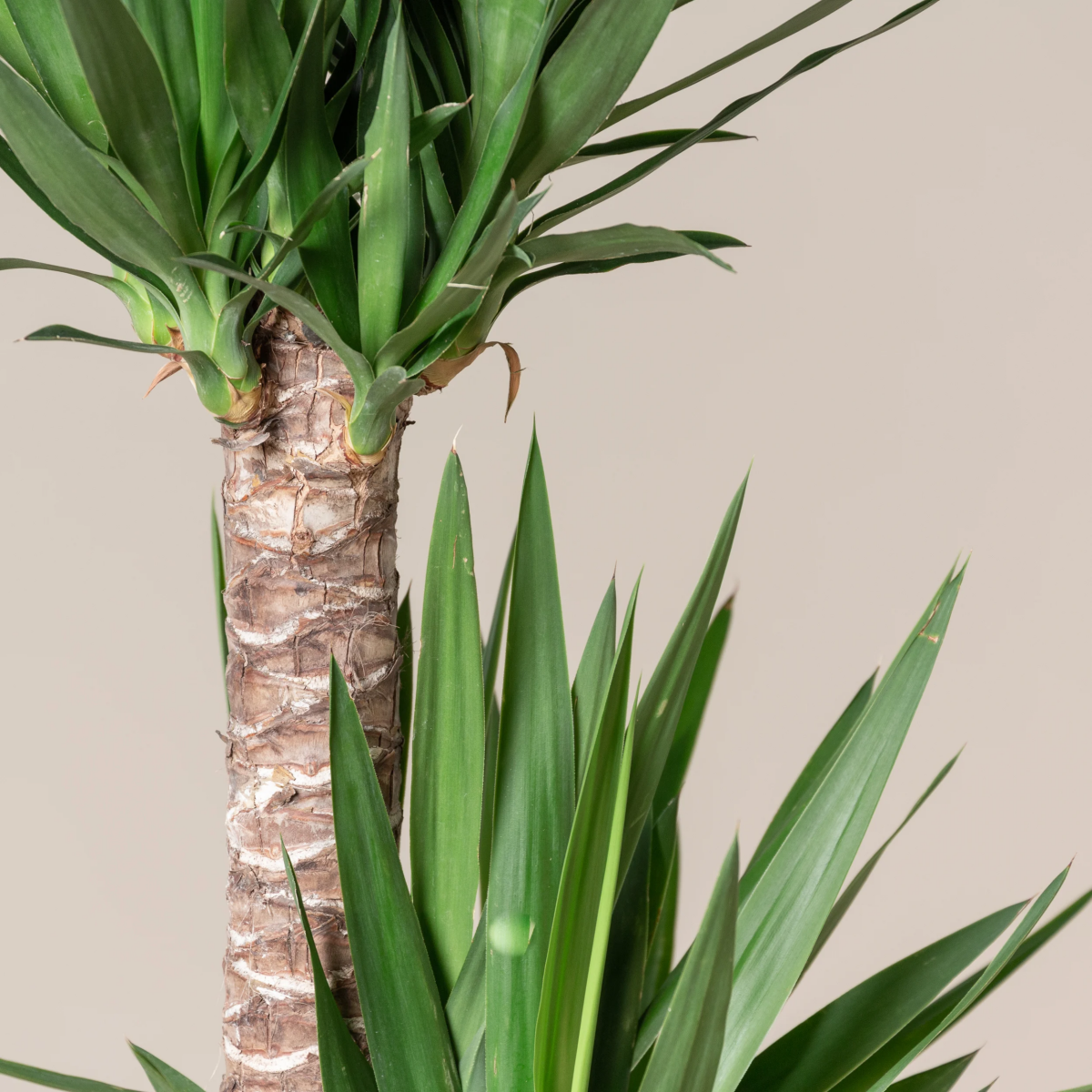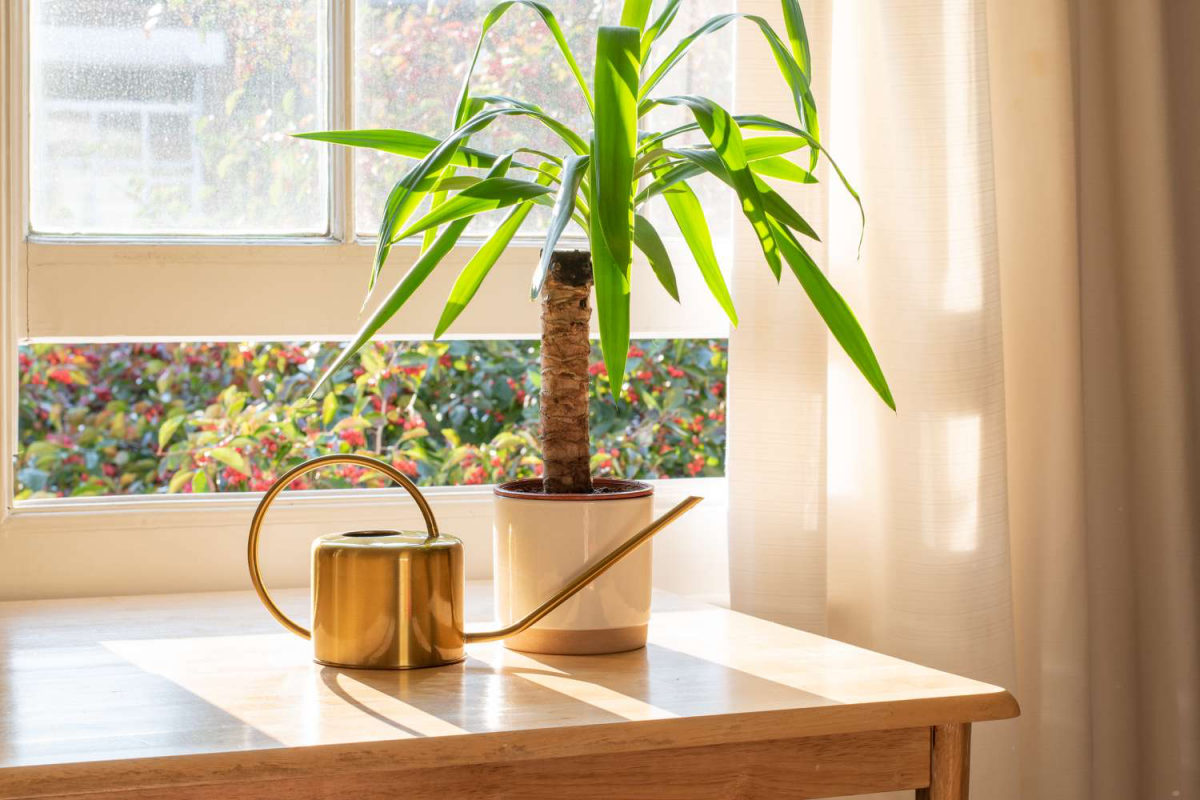Yucca Plant Care Made Easy: 6 Essential Tips For Beginners
Welcome to the enchanting world of the yucca plant, where hardiness meets architectural beauty. These resilient plants are native to arid parts of the Americas. Yuccas are not just visually striking with their sword-like leaves and impressive flower spikes. They are also champions of survival in challenging environments. Their ability to thrive in drought conditions makes them a favorite among gardeners seeking both beauty and low maintenance. Yuccas offer year-round visual interest in any garden setting, from their spiky foliage to their tall, elegant flower stalks. Moreover, they play a significant role in purifying the air, both indoors and outdoors. Whether you desire a desert-themed landscape or a striking indoor plant, yuccas are a versatile and rewarding choice, adding a touch of drama and sustainability to your gardening endeavors. That’s why today we will share with you how to take care of this plant like a pro so you can enjoy watching it grow and thrive.
Yuccas are visually striking with their sword-like leaves and impressive flower spikes
In this article
How To Take Care of a Yucca Plant
Yucca plants are a fascinating group within the Asparagaceae family. They are known for their rosettes of tough, sword-shaped leaves and towering clusters of white or creamy flowers. Adaptable across a range of environments, yuccas are particularly suited to arid and semi-arid regions. Their unique relationship with yucca moths, which pollinate the flowers, is a remarkable example of co-evolution and mutual benefit. The yucca genus boasts around 40-50 species, each with its unique features and growing requirements. From the statuesque Yucca elephantipes, ideal as an indoor feature plant, to the smaller, more garden-friendly Yucca filamentosa, there’s a variety to suit every landscape and indoor décor. Some, like Yucca gloriosa, can even tolerate frost, making them versatile for a range of climates and garden designs.
Yucca plants are a fascinating group within the Asparagaceae family
Getting started
Selecting the right yucca plant for your garden or indoor space involves considering the plant’s mature size, your local climate, and light availability. Smaller varieties like Yucca elephantipes are perfect for indoor spaces, while larger species can create striking outdoor focal points. Once you’ve chosen your yucca, gathering the right tools and supplies is the next step. Basic gardening tools like a sturdy spade, well-draining soil, and a pot with drainage holes (for indoor yuccas) are essential. Protective gloves are also recommended due to the yucca’s sharp leaves. These tools and supplies are foundational in providing the right care for your yucca, ensuring it thrives in its new environment.
Smaller varieties like Yucca elephantipes are perfect for indoor spaces
The perfect spot
Choosing the perfect spot for your yucca plant is crucial for its growth. Yuccas require a location with plenty of sunlight, such as a south-facing window for indoor plants, and well-drained soil to prevent root rot. When planting, dig a hole as deep as the root ball and twice as wide, position the plant, backfill with soil, and water thoroughly. For potted yuccas, ensure the container has adequate drainage holes to avoid water accumulation. This careful selection of location and proper planting technique lays the foundation for a thriving yucca, setting the stage for a robust and healthy plant that will enhance your garden or indoor space for years to come.
Choosing the perfect spot for your yucca plant is crucial for its growth
Basic needs
Caring for your yucca plant involves a balance of proper watering, sunlight, and soil conditions. Despite being drought-tolerant, yuccas need regular watering, allowing the soil to dry out between sessions. Overwatering is a common misstep and can lead to root rot, so it’s crucial to water only when necessary. Yuccas thrive in bright, direct sunlight, needing at least six hours a day. Indoor yuccas may require rotation for even light exposure. The soil for yucca plants should be well-draining to prevent waterlogging. A mix of potting soil with added sand or perlite is ideal. By providing the right amount of water, sunlight, and soil conditions, you ensure your yucca plant remains healthy, vibrant, and a standout feature in your garden or home.
Caring for your yucca plant involves a balance of proper watering, sunlight, and soil conditions
Nurturing and maintenance
Nurturing and maintaining your yucca plant involves regular fertilization, pruning, and pest control. While yuccas are not heavy feeders, an annual application of a balanced fertilizer can promote healthier growth. Pruning is also essential, not only for aesthetic purposes but also to remove dead or damaged leaves, promoting new growth and maintaining the plant’s shape. Be cautious during pruning due to the sharp leaf edges. Yucca plants can occasionally attract pests like scale insects and mealybugs. Regular inspection and early intervention with insecticidal soap or neem oil can prevent infestations, keeping your plant healthy. These maintenance practices are key in ensuring your yucca plant continues to grow and thrive, contributing to its longevity and beauty.
An annual application of a balanced fertilizer can promote healthier growth
Common yucca problems
Yucca plants, despite their hardiness, can encounter problems, often signaled by changes in their leaf color or root health. One of the most common issues is yellowing leaves, typically a sign of overwatering or inadequate drainage. This issue requires immediate adjustment in your watering routine – allow the soil to dry out more between waterings and ensure that your potting mix is well-draining. Root rot is another serious concern, usually stemming from excessive moisture around the roots. If you notice your yucca’s roots are soft or discolored, it’s time to take action. Remove the plant from its pot, trim away the affected roots, and replant it in fresh, well-draining soil. This prompt intervention can rescue your plant from further decline. Keeping an eye out for these signs and knowing how to respond can help maintain the health and vitality of your yucca plant, ensuring it continues to thrive in your care.
One of the most common issues is yellowing leaves
Propagation
Propagating yucca plants is a satisfying way to expand your collection and share these stunning plants with others. Yuccas offer several methods of propagation, including growing from seeds, dividing offsets, or rooting stem cuttings. Each method requires certain conditions for success. When propagating from seeds, patience is key, as germination can be slow. For offsets or stem cuttings, ensure they have well-formed roots before planting them in a suitable soil mix. Providing the right amount of light and moisture is crucial during the early stages of growth. Remember, successful propagation is a blend of the right conditions and patience, allowing each new yucca plant to establish itself and start a new cycle of growth. By following these guidelines, you can effectively propagate your yucca plants and enjoy the rewards of your gardening efforts.
Propagating yucca plants is a satisfying way to expand your collection
Indoor vs. Outdoor Yucca Plants
The care for yucca plants varies significantly depending on whether they are grown indoors or outdoors. Indoor yuccas often face challenges like limited natural light and drier home environments. They require less frequent watering compared to their outdoor counterparts and might need supplemental lighting to mimic their natural sunny habitat. On the other hand, outdoor yuccas are more exposed to natural elements like wind and varying temperatures, which they generally tolerate well. However, they might require more frequent watering, especially in dry conditions. The key to successfully growing yuccas, whether indoors or outdoors, lies in understanding and meeting their specific needs in these different environments. By providing the right balance of light, water, and nutrients, you can ensure that your yucca thrives, enhancing its health and beauty, no matter where it grows.
The care for yucca plants varies depending on whether they are grown indoors or outdoors
The yucca plant stands as a symbol of beauty and resilience in the plant world. These striking plants enhance our gardens and living spaces, bringing a unique architectural flair and a touch of the exotic. As we nurture and care for our yucca plants, we also engage in a form of sustainable gardening. Yuccas, with their low water requirements and hardiness, embody the principles of eco-friendly gardening. By growing yuccas, we not only beautify our surroundings but also contribute to a more sustainable, environmentally conscious approach to gardening. Let’s continue to celebrate the unique qualities of yucca plants and promote their growth, ensuring these magnificent plants continue to thrive and inspire future generations of gardeners.
The yucca plant stands as a symbol of beauty and resilience in the plant world


